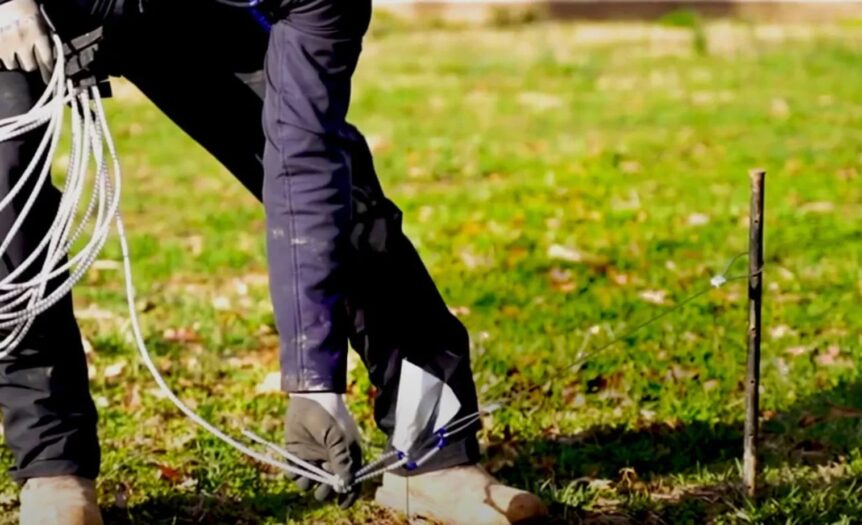A fence can significantly enhance your property’s privacy, security, and aesthetic appeal. However, before embarking on this DIY project, it’s crucial to ensure you have the right tools. So, what tools are necessary for a DIY fence installation?
The essential tools for a DIY fence installation include a post-hole digger, level, measuring tape, hammer, saw, drill, screwdriver, and shovel. These basic tools will enable you to complete most standard fence installations effectively.
While this list covers the basics, it’s important to note that the specific tools you’ll need may vary depending on the type of fence you’re installing and the particular challenges of your property. Continuing to read will give you a more comprehensive understanding of the tools required for different fence types and terrain conditions, ensuring you’re fully prepared for your DIY project.
How Do The Required Tools Vary For Different Fence Types?
The tools needed for your DIY fence installation can vary significantly depending on the type of fence you’re planning to build. For a wooden fence, you’ll likely need additional tools such as a circular saw or miter saw for cutting boards to size, a nail gun or hammer for fastening, and a paintbrush or sprayer if you plan to stain or paint the fence.
If you’re installing a chain-link fence, you’ll need specialized tools like fence pliers to attach the chain-link fabric to the posts and tension bars. A pipe cutter may also be necessary to cut the top rail to the correct length.
For vinyl fencing, you might need a vinyl fence notching tool to create precise cuts for pickets and rails. A rubber mallet is also useful for gently tapping vinyl components into place without causing damage.
What Additional Tools Are Needed For Challenging Terrain?
Your toolkit may need to expand when installing a fence on uneven or rocky terrain. A gas-powered drill can be a lifesaver when digging holes in hard or rocky soil, making the process much quicker and easier than a manual post-hole digger.
If your property has a significant slope, you’ll want to invest in a long or laser level to ensure your fence line remains straight despite the terrain changes. A string line and line level can also help maintain a consistent top-line across your fence.
In areas with tree roots or underground obstacles, a reciprocating saw with a pruning blade can help you cut through roots without disturbing the entire area. A hatchet or pickaxe might also be necessary for breaking up particularly tough ground.
In areas with particularly challenging terrain or complex installation requirements, it may be worth consulting with or hiring a fence installation contractor to ensure the job is done correctly and safely.
What Safety Equipment Should Be Used During Fence Installation?
While focusing on the tools needed for the job, it’s crucial to pay attention to safety equipment. Safety glasses are a must-have to protect your eyes from flying debris, especially when cutting materials or digging holes.
Work gloves protect your hands from splinters, cuts, and blisters. Depending on your working materials, you might consider heavy-duty work gloves for added protection.
Ear protection is important to prevent hearing damage when using power tools or working in a noisy environment. A dust mask or respirator is also advisable when cutting materials that produce fine particles, like pressure-treated wood or concrete.
Lastly, remember proper footwear. Steel-toed boots can protect your feet from falling tools or materials while providing good traction and support for the various tasks involved in fence installation.
What Are Some Time-Saving Power Tools For Fence Installation?
While many fence installations can be completed with hand tools, power tools can significantly speed up the process and reduce physical strain. A cordless drill is invaluable for driving screws and creating pilot holes quickly. Look for one with multiple speed settings and a high torque rating for versatility.
An impact driver can be a game-changer when it comes to driving long screws or lag bolts into fence posts. Its high torque and rapid impact make it much more efficient than a standard drill for these tasks.
For wooden fences, a power miter saw can dramatically speed up the process of cutting boards to length. It allows for quick, accurate cuts and can easily handle angled cuts for decorative fence tops.
If you’re working with metal components, an angle grinder can be useful for cutting metal posts or trimming bolts. Just use the appropriate cutting wheel and follow all safety guidelines.
How Can You Ensure Accurate Measurements And Straight Lines?
Accurate measurements and straight lines are crucial for a professional-looking fence installation. A laser distance meter can provide quick and precise measurements, especially for longer distances. This tool can save time and reduce errors compared to traditional tape measures.
A string line is an essential tool for ensuring straight lines. Stretch it between stakes to create a visual guide for your fence line. To check for level, attach a line level to your string line.
A post level is another handy tool that wraps around fence posts, allowing you to simultaneously check for plumb (vertical alignment) in two directions. This ensures your posts are perfectly straight, which is crucial for your fence’s overall stability and appearance.
Consider renting or purchasing a transit level for more complex layouts or uneven terrain. This surveying tool can help you establish consistent heights across your fence line, ensuring a professional result even on challenging sites.
Setting Your Sights
Now that you’re armed with knowledge about the tools needed for a DIY fence installation, it’s time to take action. Start by making a comprehensive list of the tools you’ll need based on your specific fence type and property conditions. Once you have your list, consider which tools you already own, which you can borrow from friends or neighbors, and which you’ll need to purchase or rent. This planning step will ensure you’re fully prepared when you’re ready to begin your fence installation project.










